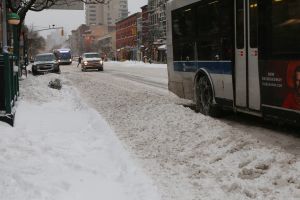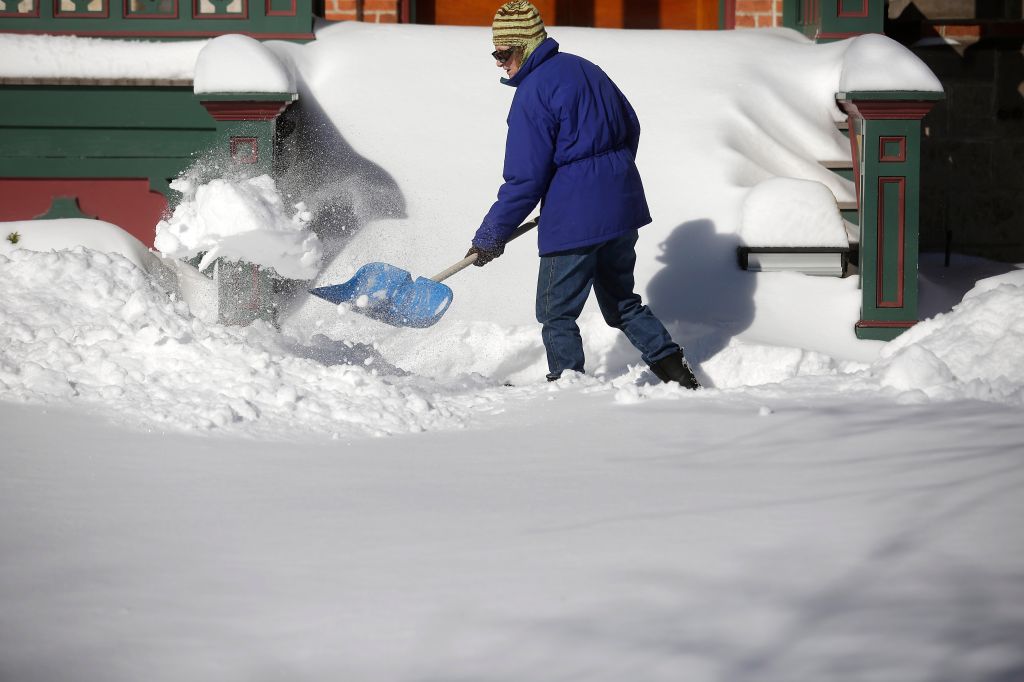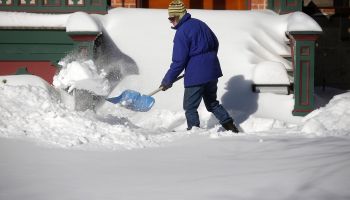
Source: Derrick Salters/WENN.com / WENN
Winter is almost here and you don’t want to be stranded during the cold temps. Here are a few tips to help you winterize your car and be proactive about being safe during the frigid season.

Source: Joshua Lott / Getty
Here is a great 11 point winter car protection checklist courtesy of Nationwide.com.
1. Check antifreeze and cooling system
- Before temperatures drop significantly, drain your cooling system and add new antifreeze (draining the car radiator and refilling it with new coolant should be done at least once a year)
- Check the owner’s manual for the proper coolant level
- Make sure the reserve tank or overflow tank fluid levels are sufficient
2. Check tires
- Check tires weekly for proper tread and recommended tire pressure (you’ll find the recommended tire pressure inside the driver’s side door, doorframe or in the owner’s manual)
- Replace worn tires
- All-weather tires are generally adequate for winter, but some states require vehicles to have tire chains or snow tires with studs, so make sure to check local laws
- If you live in an area prone to snow and ice, consider winter tires, which are designed to better grip the icy pavement
3. Replace worn windshield wipers
- Replace worn windshield wipers since sand and salt will be more prevalent on your windshield in winter weather
- Replace wiper fluid with a winter mixture and maintain the proper fluid level
- Consider winter wiper blades to help cut through snow and ice
4. Check brake pads and brake fluid
- Check brake fluid levels and brake pads for wear and tear
- Replace worn pads and rotors
5. Test car battery
- Make sure battery cables and terminals are secure and free from corrosion
- Test your battery by turning on the headlights before starting the engine – if they get brighter once you start the engine, schedule an appointment with a mechanic for further electrical inspection
- If your battery is more than 3 years old, have it inspected by a mechanic
6. Check heater and defroster
- Turn your heater and defroster on and off to make sure they are working correctly
7. Clean foggy headlights
- Make sure all lights are clean and working properly
- Clean lights off prior to driving in any type of precipitation
- Replace headlights that are foggy, hazy or damaged to improve visibility
8. Check motor oil
- Chang e you oil and filter at recommended intervals
- Heavier oils thicken at lower temperatures and may not lubricate as well, so consider switching to “winter weight” or less viscous oil
9. Inspect exhaust system
- Replace or repair leaks and crimped pipes to help keep carbon monoxide out of the passenger compartment
10. Keep gas tank at least half full
- To keep moisture in the gas line from freezing and for easier cold-weather starts, keep at least a half of tank o f gas
11. Periodically wash your car
- Prevent road salt from damaging your paint by washing your car during winter
- Apply a fresh coat of to avoid corrosion
Have a happy and safe winter. For more details, click here.
















